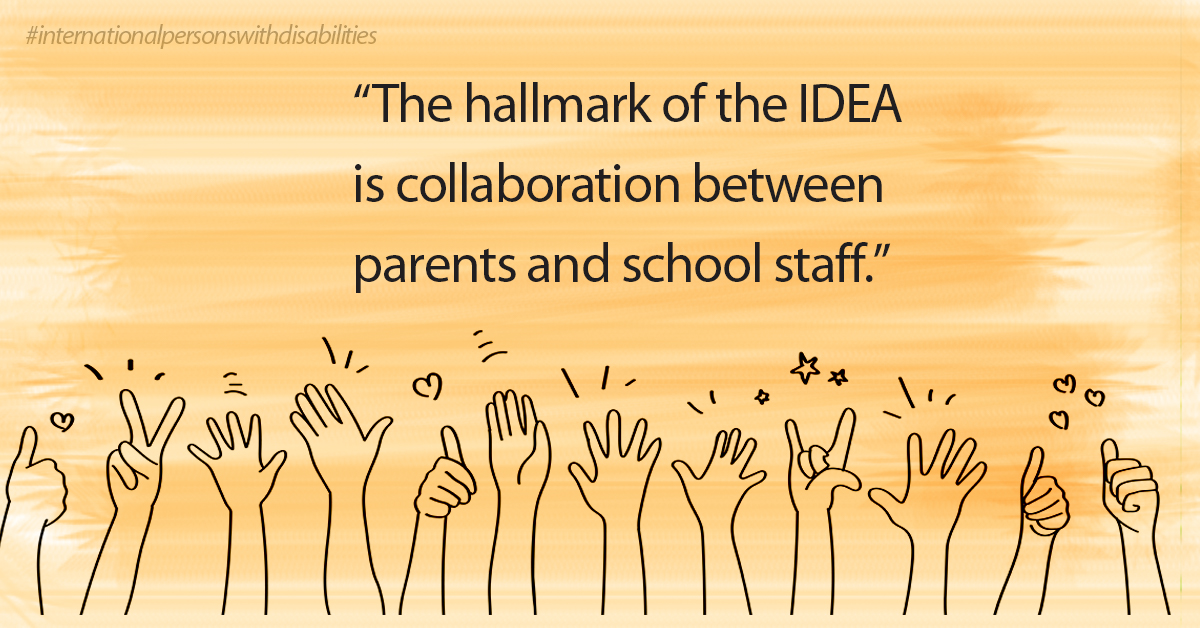December 3rd is United Nations’ International Day of Persons with Disabilities
By Jayne M. Wesler, Esq
December celebrates multiple happy holidays, Kwanzaa, Hannukah, and Christmas among them. It’s also the month when the world celebrates the dignity, rights, and well-being of persons with disabilities during the United Nations’ International Day of Persons with Disabilities.
The United Nations first proclaimed an International Year of Disabled Persons in 1981, kicking off the celebration with the theme of “Full Participation and Equality.” The UN’s intention was to help persons with disabilities live life to the fullest by participating in the development of society, and by having the opportunity for education, employment, and socio-economic status equal to those who do not have a disability.
In New Jersey, children with disabilities are protected by law, which includes both federal and state law, federal and state regulations, and judicial decisions. These all comprise the standard by which students with disabilities should be educated in order to achieve that dignity, those rights, and that well-being.
When Congress enacted the Individuals with Disabilities Education Act or IDEA, the members found the following:
“Disability is a natural part of the human experience and in no way diminishes the right of individuals to participate in or contribute to society. Improving educational results for children with disabilities is an essential element of our national policy of ensuring equality of opportunity, full participation, independent living, and economic self-sufficiency for individuals with disabilities.”
Prior to 1975, when Congress enacted IDEA’s foundational law, school districts were not meeting the educational needs of the multitude of students who had disabilities. The reasons for this lack, Congress included, were:
(A) the children did not receive appropriate educational services;
(B) the children were excluded entirely from the public school system and from being educated with their peers;
(C) undiagnosed disabilities prevented the children from having a successful educational experience; or
(D) a lack of adequate resources within the public school system forced families to find services outside the public school system.
For these reasons, Congress set out to rectify this inequality. While the foundational law of IDEA, called the Education for All Handicapped Children Act of 1975 (EAHCA), achieved its goal of providing access to what we now call FAPE—a free appropriate public education–the implementation of EAHCA was impaired due to the attitude by society and by school districts that students with special needs were low achievers, and the failure of school districts to apply proven, evidence-based methods to the instruction of children with disabilities.
Congress enacted IDEA after nearly thirty years of research and experience had demonstrated that children with disabilities can be more effectively educated by various measures, including:
• having high expectations for children with special needs;
• inclusion in the general education curriculum “to the maximum extent possible;”
• ensuring that parents have meaningful opportunities to participate in their children’s education both at school and at home;
• providing appropriate special education and related services, aids, and supports wherever needed and whenever appropriate;
• supporting high-quality professional development for all personnel; and
• supporting the development and use of technology, including assistive technology devices and assistive technology services, to maximize accessibility for children with disabilities.
Keep in mind that the federal law, which is reflected and carried out in state law, is intended to:
• Ensure that all children with disabilities receive a free appropriate public education. That is a legal term of art with a number of standards that your school district must meet, including the provision of meaningful educational benefit and significant learning to your child.
• Prepare your child for post-secondary education, employment. and independent living, if possible. As more and more children with disabilities graduate from high school, the provision of effective services to help your student transition to successful post-school employment or education is vitally important.
Remember, the hallmark of the IDEA is a collaboration between parents and school staff. The law specifically intends that “Parents and schools should be given expanded opportunities to resolve their disagreements in positive and constructive ways.”
If you are having difficulty resolving a disagreement with your school district, contact us today.


